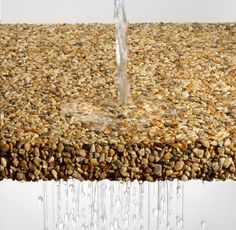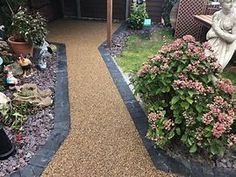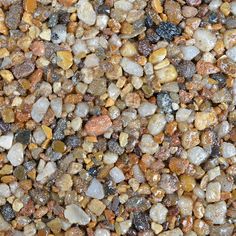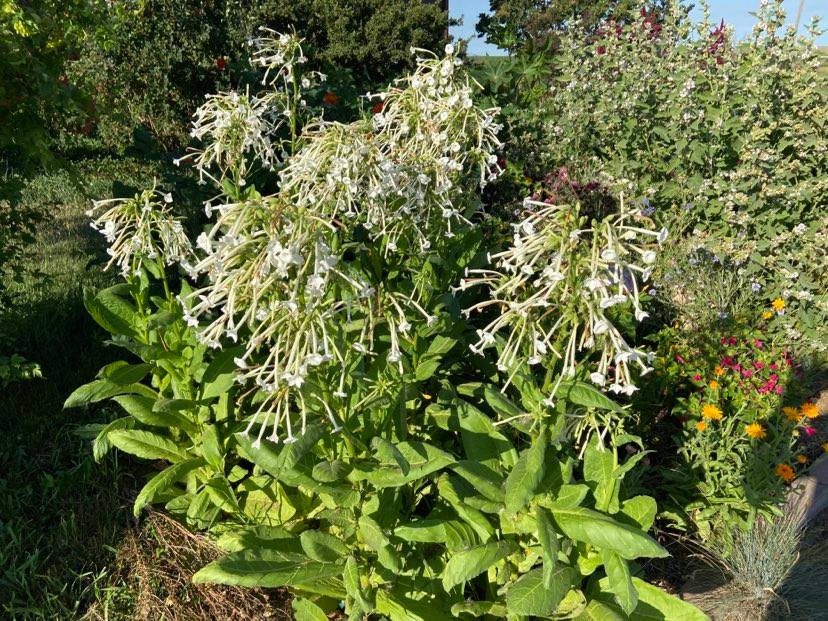Resin surfacing has become popular recently after coming over from England and Ireland. This is a process of mixed colored gravel with epoxy for driveways, paths, and patio surfaces. They provide good traction when wet, the water through (depending on the technique), and weed growth is curtailed.

You must have a good base like concrete to start with. There is resin-coated colored gravel that is placed on the base. The gravel will bind with the base and to each other. This method is called scattercoat.

Or you can mix the colored pea gravel with the epoxy and spread and smooth onto the base. Then smooth out with a concrete trowel. This method is called resin bound.

There are resin panels (like stepping stones) that can fit together on a base of compacted sand.


